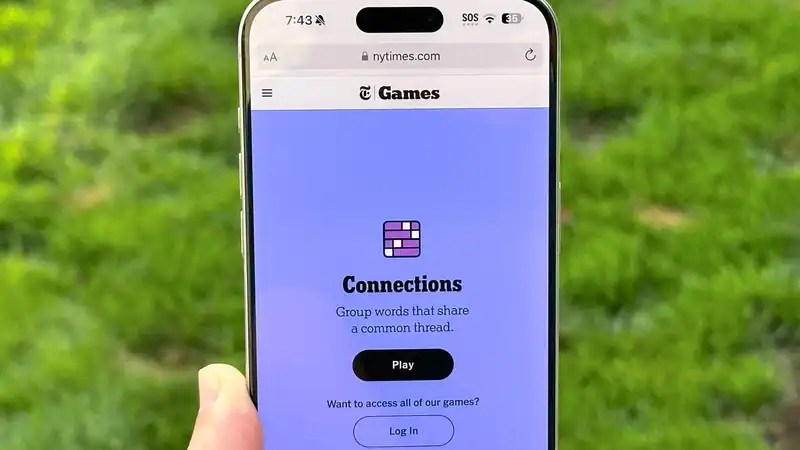TCL has announced two pairs of AR glasses: the RayNeo X2 is the more powerful pair, aimed at developers and power users, and the RayNeo X2 Lite is smaller and more consumer oriented The great thing about the RayNeo X2 Lite is that it doesn't seem to be stuck in the same pitfalls as previous attempts at AR glasses [RayNeo X2 will be available on Indiegogo later this week, but an actual release date has yet to be announced The MSRP is set at $899, but an early bird special will reduce the price to $649 and $699 for a limited number of pre-orders; the RayNeo X2 Lite will be available in Q3 2024, but pricing has yet to be confirmed
An important point to note is that these are standalone AR glasses with their own battery and processing power; the RayNeo X2 is powered by Qualcomm's flagship mixed reality Snapdragon XR2 chipset, while the X2 Lite running on the Snapdragon AR1 Gen 1 This allows users to make phone calls using their glasses without having to take out their cell phone [We were told that the RayNeo X2 is essentially a first generation model, designed for early adopters and developers with Pro and spatial computing oriented features RayNeo X2 Lite, on the other hand, is a bit more sophisticated, but is built for a bit more consumer oriented and consequently offers more basic functionality
Both glasses can be operated using a touchpad on the right frame, or a small ring that is a miniature version of a touchpad Essentially, tapping or swiping the ring is a discreet and easy way to control the glasses, rather than constantly touching the frame
A standout feature is the onboard AI assistant, which allows you to communicate using your voice; powered by ChatGPT 35, you can speak a little more naturally than with Alexa or the basic version of Google Assistant GPT 4 also has AI object recognition and, by using the built-in camera and microphone, can actually see through the glasses
This may have privacy implications going forward, as well as the fact that these cameras are capable of filming and photographing However, this is something that all smart glasses will have to address fairly soon
Other features include real-time translation, which is not currently integrated with AI Instead, the translation feature works like Google Translate and other traditional translation apps There are also built-in games, but the examples I saw were fairly basic, like learning to play the drums
The major problem I found with the MWC demo units was that none of the glasses were set up to fit my face properly Combined with the limited viewing angle of the content projected on the lenses, I had to wear the glasses in the lower third of my nose (just where the bone ends) I am not a glasses user, but this is considerably lower than where I wear sunglasses
While not ideal, I was told that the nose pads can be adjusted to make them more comfortable to wear The RayNeoX2 also had rather chunky ear tips, which pushed the tops of the ears back Thankfully, the slimmed-down RayNeoX2 Lite did not have the same problem with my dowdy ears However, even with the Lite's smaller form factor, it is still larger than regular glasses
Importantly, both glasses are more comfortable to wear than VR or AR headsets I have not used more recent products like the Apple Vision Pro or the Meta Quest 3, but I do know that such full-size headsets are inferior in size and weight
The spectacle-shaped design of the RayNeo X2 model does not have that same problem The larger X2 model weighs just 120 grams (423 ounces), while the X2 Lite is half that, at 60 grams (21 ounces)
TCL claims that the RayNeo X2 is the first AR glasses with a micro-LED screen that can project images to both eyes in full color The images appeared a bit pixelated at times, but were in full color and allowed the user to see the world around them It was dark, as if I was looking through sunglasses, but the images definitely poked digital content between me and the real world
Nevertheless, the images are quite large and would be distracting in certain citations Therefore, it is certainly not a device that should be used while driving, for example
Other features I checked out included talking to the AI assistant on the X2 There was a slight lag before text appeared on the screen, but it seemed to understand what I was asking for Similarly, the navigation interface will prove to be very useful, as I don't have to keep referring to my phone or watch
The most important thing to note here is that this is not a powerful spatial computer like the Apple Vision Pro While some spatial features are possible, what I saw certainly did not conjure up the kind of productive and powerful image that Apple is trying to cultivate with the Apple Vision Pro Then again, that's not really the point
The fact that these are AR glasses that can be used alone, without relying on a paired device, is impressive in itself Admittedly, the RayNeo X2 looks quite bulky compared to regular glasses But compared to other standalone XR devices we have seen so far, it is surprisingly streamlined, which is impressive The dual-color display is particularly nice, and the X2's new, more compact design is a nice addition to the X2's collection










Comments